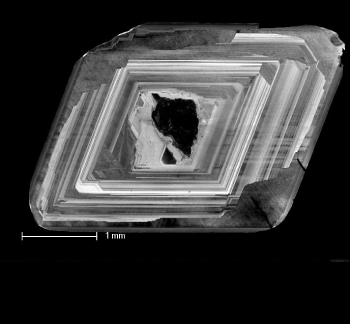Diamonds grow like trees, but over millions of years

Diamonds consist of highly compressed carbon atoms and develop deep underground at relatively high pressures and temperatures of over 1000 degrees Celsius. Earth scientists from VU University Amsterdam show that diamonds often have 'growth rings' similar to trees: due to changes in temperature and composition, the chemical composition in the growth zones changes, which leads to the development of 'rings' in the diamond. In addition, the scientists show that diamonds take millions of years to grow. Moreover, diamonds are often half as old as the Earth. Daphne Wiggers de Vries will defend her PhD thesis on this study on Thursday, September 19th.
Diamonds are billions of years old
The investigated diamonds are from Yakutia in Russia and show that in this region they formed in two important periods in the past: 1 billion years ago and 2 billion years ago. Many individual diamonds record growth in both periods proving for the first time that diamonds take millions of years to form. In both periods, major changes took place in the Earth's crust: tectonic plates in the region pushed together causing fluids rich in carbon to move enabling the diamonds to grow. Because diamonds are so old and grow very slowly, they are perfect to learn more about the history of the Earth.
Radioactive decay
Most diamonds contain microscopic mineral inclusions. The scientists used special equipment to determine the age of the rings in diamonds. Some mineral inclusions in diamonds contain the element rhenium, which slowly disintegrates into osmium, a process called radioactive decay. Mineral inclusions mostly contain rhenium at the time of inclusion of such a mineral in the diamond. Over time, the amount of rhenium decreases while the amount of osmium increases. When the diamond and the included mineral are formed simultaneously, the age of the mineral corresponds with the age of the diamond
More information: Daphne Wiggers de Vries will defend her PhD thesis on Thursday, September 19 at 11:45 am (CET) at VU University Amsterdam.
Provided by University of Amsterdam



















